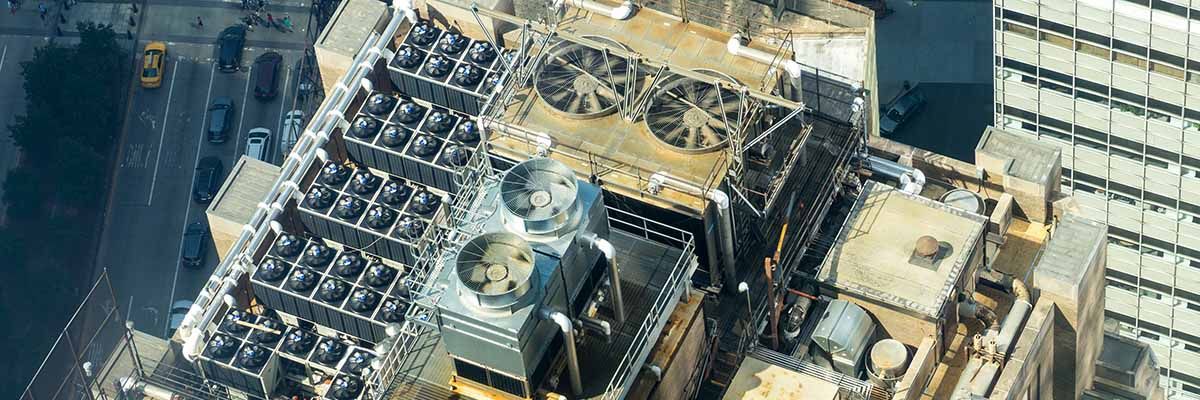
Blowing hot and cold: what is HVAC damper control and how can you benefit?
If you picture an HVAC system with a main supply line and supply ducts running from it to different physical areas (floors, rooms, etc.) then it’s easy to grasp that if you place dampers at intersections, you’re essentially “zoning” your system. The dampers serve to direct, or re-direct air to one location or zone or another.
Damper function
The function of a damper is to regulate the amount of air (cooled or heated) that enters the ducts for dispersal around a building ultimately ensuring the temperature in a destination zone reaches the desired level, which may differ from the desired temperature in another area.
There’s a distinction to be made here between dampers and vents, which don’t serve the same function. Dampers re-direct air flow in a different direction. Vents, when closed, simply shut off air from reaching its destination.
Varieties of damper
Like vents, dampers don’t come in “one size fits all”. There are different kinds of dampers and different types of control mechanisms for them. Let’s look at the alternatives, first control mechanisms, of which there two options.
- Automatic: Damper valves and plates are opened and closed by a motor and can be controlled remotely. They can also self-regulate.
- Manual: manual controls are found outside the ducts and moving them up or down will open or close a specific damper.
When it comes to the dampers themselves, alternatives include:
- Butterfly – a round blade which is aligned with the ducts to control airflow along with a central hinge and a seal between the blade’s edges and the duct itself to prevent ingress from any random materials. These dampers have high sealing quality and produce very little noise.
- Blade dampers use metal plates to control airflow and there are two sub-types: parallel and opposing blade depending on whether the two damper blades more in the same or opposite directions. Generally, parallel blade is best for control airflow, opposing blade is better for directing airflow.
- Guillotine dampers, like butterfly, are renowned for their sealing ability but are not idea for regulating airflow more generally. They’re best used when isolating a zone.
- Louvers are probably the most common HVAC damper, not least because they can match almost all duct sizes. However, they’re more usually seen in domestic installations.
- Inlet vane dampers are probably the most complex option, using a fan-like approach to affect the flow of air to reduce pressure without sacrificing fan-speed. In this way, they balance airflow with blower pressure, and they’re most commonly seen in installations where noise (which they reduce) is an issue.
Dampers: yes, or no?
Now that we understand dampers, what they are and what they do, one big question remains. What are the benefits they deliver? Here are five that spring quickly to mind.
- Temperature regulation
Generally, the larger facility and the more distinct zones it contains the more likely it is that dampers will make a significant difference. For instance, with dampers you can more easily achieve the desired, but different temperatures required by an office space on one floor and a warehouse area on another.
- Operational cost savings
Dampers can ensure that conditioned area only is fed to the areas that need it, and that conditioned air isn’t wasted on spaces where it is not needed, such as an empty office or a room that is already comfortable.
- Quality of environment
Dampers contribute to creating a healthy environment by ensuring consistent air circulation and regulated temperatures where needed.
- Noise reduction
As we noted earlier when discussing types of dampers, some can help significantly reduced HVAC system noise and this, too, improves the facility’s environment.
- Prevent air leaks
Dampers perform the function of sealing ductwork, the knock-on effect of which is to reduce or entirely prevent air leaks thus eliminating the chance of already conditioned air escaping. This, of course, improves the performance of the HVAC system generally while also upgrading energy efficiency.
Of course, the ultimate benefit is to ensure your HVAC is properly optimized for your location and needs, backed by the power of cloud-based analytics and automated control. At NexRev, we’ve been unlocking the power in facility and energy management data with over half a million connected devices across North America.
Our team of experts is focused on helping you deliver more with your budgets, infrastructure, and assets to create sustainable savings in operations and energy, reducing your risk and increasing operational confidence.
If you’re interested in learning more about how our solutions can help your enterprise reduce energy costs, please send an email to: